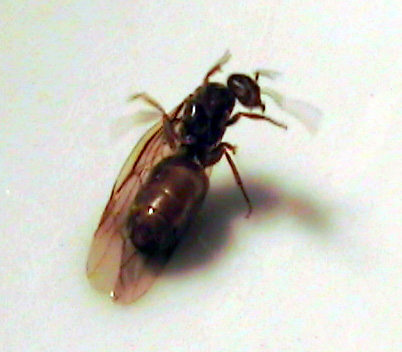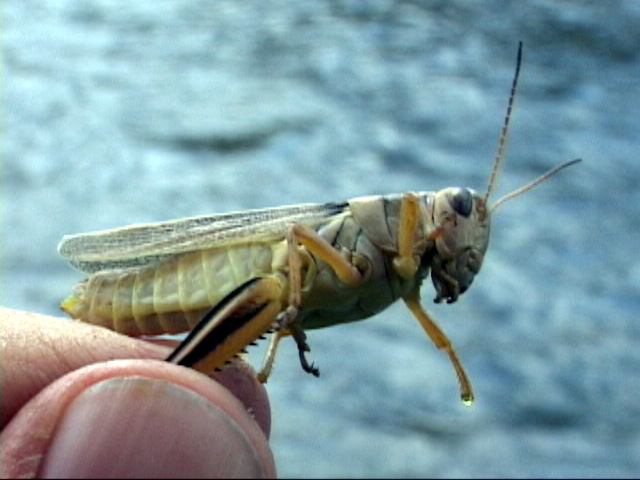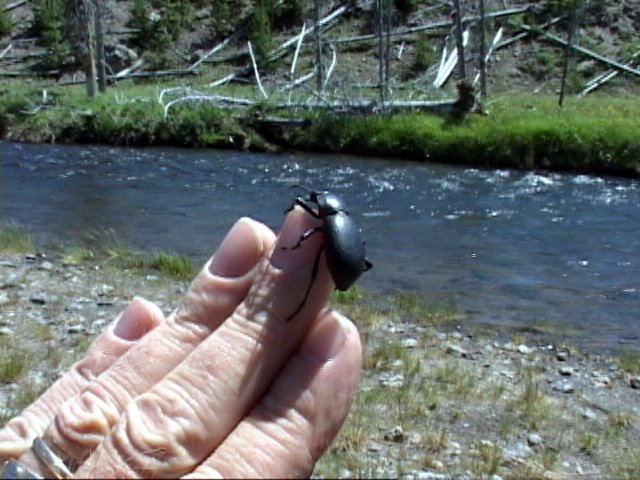First, although I’m sure most of you already know, I just want to make sure you understand what the term terrestrial insect refers too. Terrestrial insects are insects that are born and spend most of their life on land. They get into the water only by accident. Windy conditions and other natural conditions can cause these insects to sometimes loose their caution and end up becoming a meal for a trout.
It would be a rare occasion that trout ever became selective on any terrestrial insect. It would be possible during a flying ant fall, or possibly when a large amount of ants or beetles were washed into the water by heavy rains or high winds. This means that most all of the time, the trout are just looking for something to eat on the surface of the water. They do not recognize the various types or species of terrestrial insects that may come floating by. The strictly feed opportunistically on them. When there are few insects on the water trout are likely to take every insect that comes by.
If a large amount of any one insect became available over a period of time, then it would be likely that the trout would search only for that insect or feed selectively on it. When this happens, they begin to settle into a steady feeding rhythm and focus on individual insects. Facts are, it would be rare that enough terrestrial insects fell, blew or got washed into the water to cause selective feeding.
Imitations of Terrestrials: (Flies)
This means that you can get by with, except for a few rare exceptions, fishing an imitation of any terrestrial insect you desire to imitate. As long as it is something of the size and shape of an insect, the fish will see your fly as something to eat. Their brain isn’t large enough for them to be able to identify it as something they saw last year at the particular time of the year. They they don’t need to be able to do so in order to survive. They may eat a beetle one minute and a grass hopper a few minutes later.
If the fly sinks, it will probably get more takes from trout than if it floats beautifully on the surface. Most ants, beetles and hoppers that fall into the water slowly sink.
These are some of the more plentiful and common terrestrial insects that get into the freestone streams of Yellowstone National Park.
Beetles:
The most common terrestrial insect in the park is the beetle or Coleoptera. There are both aquatic and terrestrial forms of beetles but here we are concerned with the terrestrial form. Some species of beetles can fly and these are more likely to get into the water than the others that cannot fly. Overhanging limbs of trees, grass and shrubs provide the places for beetles to fall into the water. Flying Ant
Flying Ant  Grasshopper
Grasshopper  Beetle
Beetle
Ants:
Ants, the Formicidae family of insects, is one of the next most plentiful terrestrial insect found in the park. Fast rising water caused by heavy rains is responsible for ants and terrestrial beetles getting into the water more than anything else. Ants live in colonies and when they do get washed into the water, they usually do so in large quantities.
Some ants can fly and these flying ants can easily end up in the water. When they do, they are usually preyed on by trout in a feeding frenzy. These great swarms of arts perform their nuptial flights, the winged males or drones, die shortly after they swarm. If the flight of ants happens over a stream they fall in the water and usually just carpet the water. Don’t stand around waiting for this to happen, you may grow old waiting. But if you find flying ants falling in the water, the trout will usually go nuts. Be prepared for a flying ant fall. They usually occur during the late summer months.
Grasshoppers:
Grasshopper exist on every stream in the park but they are not as plentiful in the forest as they are in the streams that flow through meadows and open areas where high grass exist.
Wherever you find banks with lots of grass there most likely are lots of grasshoppers. Grasshoppers become important starting in July but much more so in the latter part of the Summer and early autumn. They are apt to get into the water much more so on windy days.
Bees and Wasp:
Bees live in colonies. These colonies are usually very large and contains thousands of insects. They sometimes fall into the water.